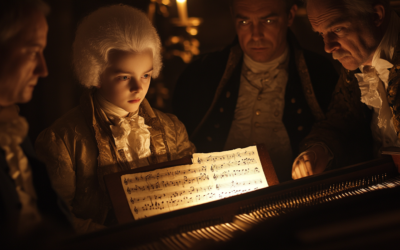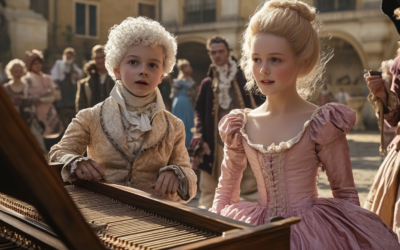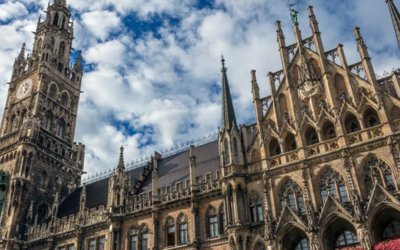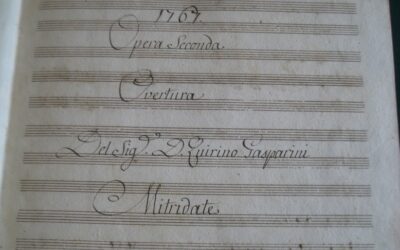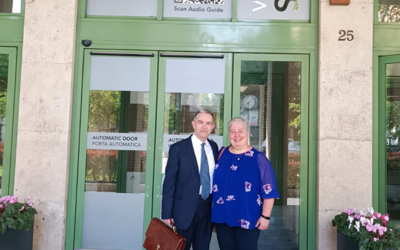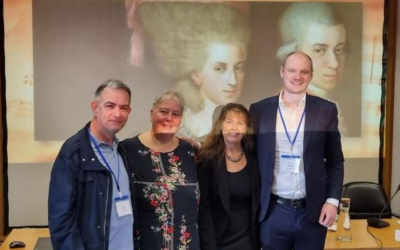The Borrowed Simplicity
Mozart’s Canons K.555, K.557, and K.562
The three canons K.555, K.557, and K.562, often dismissed for their apparent simplicity, actually offer a fascinating insight into Mozart’s creative process and his reliance on earlier models, particularly the works of Antonio Caldara.
Caldara, a celebrated composer of the early 18th century, served as vice Kapellmeister in Vienna, where his contrapuntal mastery influenced many musicians, including the Mozart family. In fact, Leopold Mozart owned copies of Caldara’s canons, and it is well-documented that Mozart drew heavily on these pieces when composing his own.
The Italian texts of these three canons match those of Caldara’s original works, and Mozart’s melodies show striking similarities with Caldara’s. While Mozart simplified Caldara’s more intricate structures to suit the fashionable galant style of his time, he nonetheless retained the harmonic richness and rhythmic elegance of the originals.
In K.557, for instance, we find sketches that show Mozart reworking Caldara’s material almost directly, borrowing not just the form but also the chromaticism and thematic gestures.
These canons, though seemingly modest, exemplify how Mozart absorbed and transformed Caldara’s complex contrapuntal language into something more accessible, yet still deeply rooted in the Baroque tradition.
Mozart: The Fall of the Gods
This book compiles the results of our studies on 18th-century music and Mozart, who has been revered for over two centuries as a deity. We dismantle the baseless cult of Mozart and strip away the clichés that falsely present him as a natural genius, revealing the contradictions in conventional biographies. In this work, divided into two parts, we identify and critically analyze several contradictory points in the vast Mozart bibliography. Each of the nearly 2,000 citations is meticulously sourced, allowing readers to verify the findings. This critical biography of Mozart emerges from these premises, addressing the numerous doubts raised by researchers.
"Mozart didn’t just borrow from Caldara—he simplified and reworked his compositions, but the original complexity of the Italian master still shines through."
Mozart: The Fall of the Gods
The three canons K.555, K.557, and K.562 stand out for their striking simplicity, forming a distinct group in Mozart’s output. Their Italian texts link them to the canons of Antonio Caldara, an Italian composer who served as vice Kapellmeister at the imperial court in Vienna for many years. Notably, the Mozart family owned copies of Caldara’s canons, with one of these manuscripts labeled “Canoni di Caldara” in Leopold Mozart’s handwriting. It’s worth noting that Mozart’s own melodies are not entirely dissimilar to those of Caldara.
Musically, these canons reflect the more elegant and simplified style of the galant era, in contrast to Caldara’s more intricate contrapuntal structures. Two of the canons are dated September 2, 1788, but there is reason to believe they might originate from an earlier period. They adopt the Italian texts from three of the seven Caldara canons that Leopold Mozart copied from the Divertimenti musicali per campagna: Lacrimoso son io (K.555), Nascoso è il mio sol (K.557), and Caro bell’idol mio (K.562).
K.555, in particular, consists of just two lines: “Lacrimoso son io, Perduto ho l’idol mio.” While the structure is correct in its basic form, the exceptions found are text-driven, with proper contrapuntal rules respected and chromatic passages handled carefully. Caldara, a master of early 18th-century counterpoint, influenced composers across Europe, including Johann Sebastian Bach, who copied Caldara’s Magnificat, adding violin parts. Leopold Mozart, too, was deeply impressed by Caldara’s work, as were Beethoven and Brahms, who also transcribed his contrapuntal models.
The canon K.557, Nascoso è il mio sol, written in F minor—a key that Mozart rarely used for his canons, though frequently found in Caldara’s works—is arguably the most revealing in terms of understanding Mozart’s process. Early sketches of this canon, published in the Neue Mozart-Ausgabe (NMA), reveal Mozart’s method of reworking pre-existing material. His adaptation, simple in harmony but rhythmically engaging, can be traced back to Caldara’s canons. The fundamental model, comprising a three-bar pattern for four voices, mirrors Caldara’s Se viver non poss’io, also in F minor. When comparing the first six bars of K.557 to Caldara’s, the resemblance is unmistakable.
In fact, by simplifying Caldara’s original three-voice canon and removing a few notes, Mozart’s adaptation becomes evident. Despite these reductions, Caldara’s version remains more complex, but when only the principal notes are considered, Mozart’s reliance on Caldara’s structure becomes obvious. The rhythmic patterns, along with the literal text, mirror Caldara’s style. Another canon of Caldara’s, Mia Clori addio, further supports this claim, showing identical rhythmic figures and the same final cadence.
What stands out in K.557 is the use of an ascending appoggiatura (C-Db) on strong beats—a stylistic trait common in Caldara’s compositions. The chromatic passages that Mozart retained in his final version seem to be directly copied from Caldara’s example or similar canons among the approximately 600 Caldara composed. Even the chromaticism Mozart employed appears identical when transposed an octave lower.
Mozart’s approach here wasn’t mere copying; he masked Caldara’s original melodies by shifting thematic fragments between voices. His extensive revisions show how much he struggled with these canons. In essence, while Caldara’s tonal structures are far more complex, Mozart reworked them into something simpler, yet still rooted in Caldara’s more intricate models.
Each of Mozart’s canons displays a distinct connection to his operatic bel canto style: K.555 stands out for its melismatic qualities, K.557 for its use of chromatic harmonies and suspensions, and K.562 for its thematic borrowing from Caldara’s original. In fact, K.562 likely suffered the most during the copying process, with numerous errors introduced, as shown by the critical points highlighted below.
You May Also Like
The Fabrication of Genius
Leopold Mozart’s tireless efforts to promote his son Wolfgang as a child prodigy were rooted in manipulation, exaggeration, and a relentless drive for social success. Far from being a miraculous genius, Wolfgang was pushed into the spotlight by his father, whose grandiose claims often obscured the reality of his son’s abilities.
The Myth of Mozart
A critical examination of Wolfgang Amadeus Mozart’s life reveals a man shaped more by his father’s ambitions than by innate genius. Stripped of the myths, Mozart’s early years reflect a childhood dominated by relentless touring, inconsistent education, and a legacy built on exaggerated achievements. Discover the real story behind the legend.
The Return of Gatti’s Aria
In the magnificent Max Joseph Hall of the Residenz München, tenor Daniel Behle performed the aria “Puoi vantar le tue ritorte” by Luigi Gatti, taken from his opera Nitteti. This concertante piece, for which we composed the cadenzas, was brought to life by the Salzburger Hofmusik orchestra under the direction of Wolfgang Brunner.
Quirino Gasparini’s Music Performed for the First Time
For the first time in modern history, Quirino Gasparini’s music has been performed. This concert, featuring arias from Mitridate and Beethoven’s Seventh Symphony, was conducted by Maestro Leonardo Muzii, with soprano Anastasiia Petrova.
Teaching Mozart at Bocconi University
We delivered a four-hour lecture on Mozart at Bocconi University, showcasing unpublished music by Gasparini, Gatti, and Tozzi while comparing textual and musical treatment with Mozart’s works. Unseen variants from Le Nozze di Figaro were also revealed.
New Revelations About Mozart at the Évora Forensic Conference
At the Évora Forensic Conference, new research confirmed that both Mozart’s personal catalogue and the signatures on his violin concertos are forgeries, challenging long-held beliefs.


